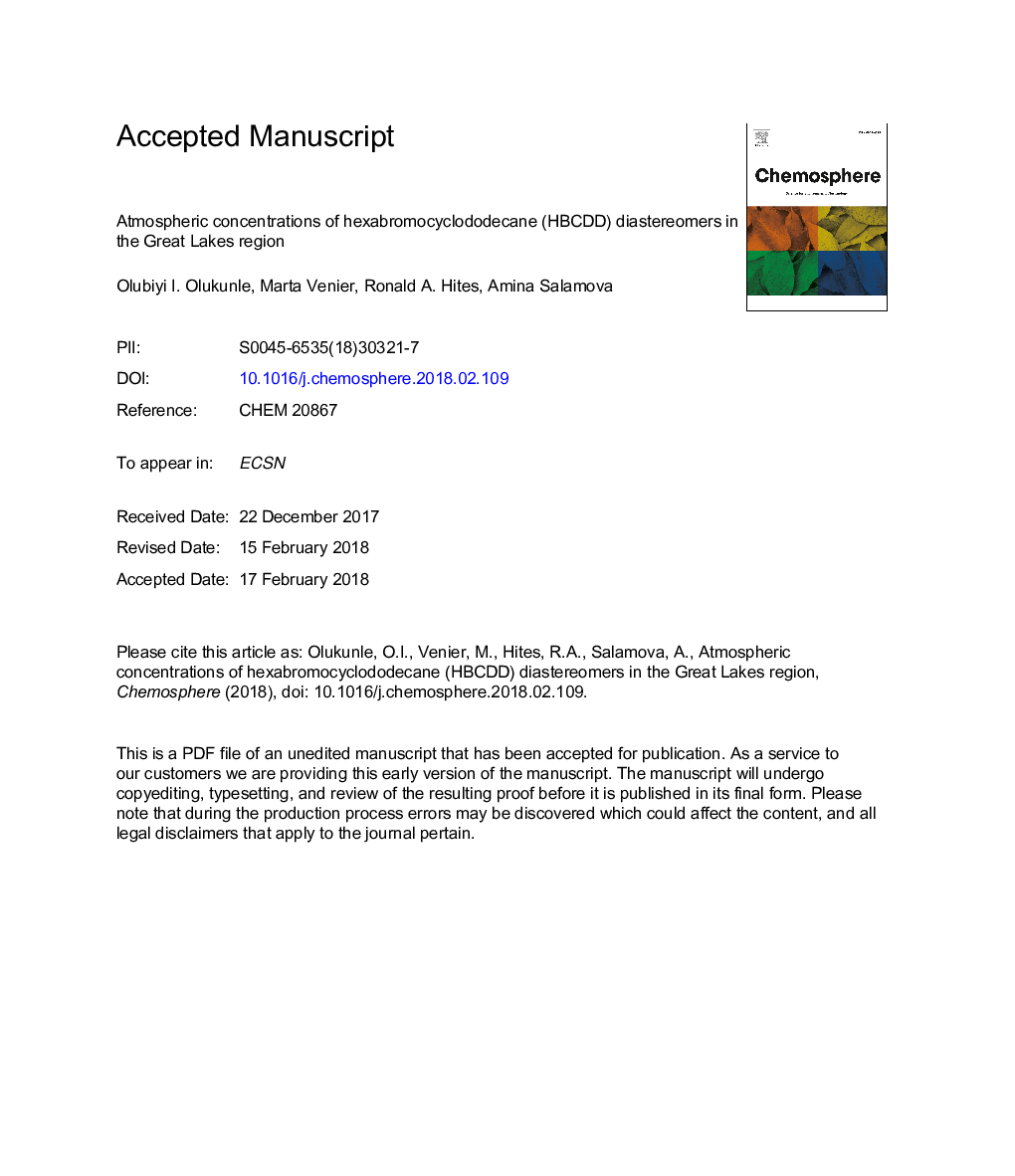| کد مقاله | کد نشریه | سال انتشار | مقاله انگلیسی | نسخه تمام متن |
|---|---|---|---|---|
| 8851686 | 1618771 | 2018 | 25 صفحه PDF | دانلود رایگان |
عنوان انگلیسی مقاله ISI
Atmospheric concentrations of hexabromocyclododecane (HBCDD) diastereomers in the Great Lakes region
دانلود مقاله + سفارش ترجمه
دانلود مقاله ISI انگلیسی
رایگان برای ایرانیان
کلمات کلیدی
موضوعات مرتبط
علوم زیستی و بیوفناوری
علوم محیط زیست
شیمی زیست محیطی
پیش نمایش صفحه اول مقاله

چکیده انگلیسی
The concentrations of α-, β-, and γ-hexabromocyclododecane (HBCDD) diastereomers in atmospheric particle phase samples were determined at four United States Integrated Atmospheric Deposition Network (IADN) sites located in the North American Great Lakes basin collected between 1 January and 31 December 2014. The concentrations ranged from 0.37 to 8.9â¯pg/m3, 0.12-4.0â¯pg/m3, and 0.26-22â¯pg/m3 for α-, β-, and γ-HBCDD, respectively among the four sampling sites. The median ΣHBCDD concentrations for the four sites were 2.0â¯pg/m3, 2.1â¯pg/m3, 1.7â¯pg/m3 and 5.2â¯pg/m3 for Chicago, Cleveland, Sturgeon Point and Sleeping Bear Dunes, respectively. Higher levels of âHBCDD were observed at the remote site of Sleeping Bear Dunes with comparable levels at the remaining three sites. α-HBCDD and γ-HBCDD were the dominant isomers with an average contribution of about 40% and 50% to ΣHBCDD concentrations, respectively. These HBCDD concentrations were compared with the levels of other brominated flame retardants measured in these samples, including polybrominated diphenyl ethers (PBDEs), 2,3,4,5-tetrabromoethylhexyl benzoate (EHTBB), bis(2-ethylhexyl) tetrabromophthalate (BEHTBP), and decabromodiphenylethane (DBDPE). âHBCDD concentrations were significantly lower than or indistinguishable from those of PBDEs, EHTBB, BEHTBP, and DBDPE at all sites except Sleeping Bear Dunes. No significant correlations were found between ΣHBCDD and ΣPBDE, EHTBB, BEHTBP, and DBDPE concentrations, suggesting a different source of HBCDD contamination. This is the first study reporting concentrations of HBCDD isomers in the Great Lakes ambient air, and our results indicate that HBCDD is ubiquitous in the Great Lakes basin, including at remote sites.
ناشر
Database: Elsevier - ScienceDirect (ساینس دایرکت)
Journal: Chemosphere - Volume 200, June 2018, Pages 464-470
Journal: Chemosphere - Volume 200, June 2018, Pages 464-470
نویسندگان
Olubiyi I. Olukunle, Marta Venier, Ronald A. Hites, Amina Salamova,